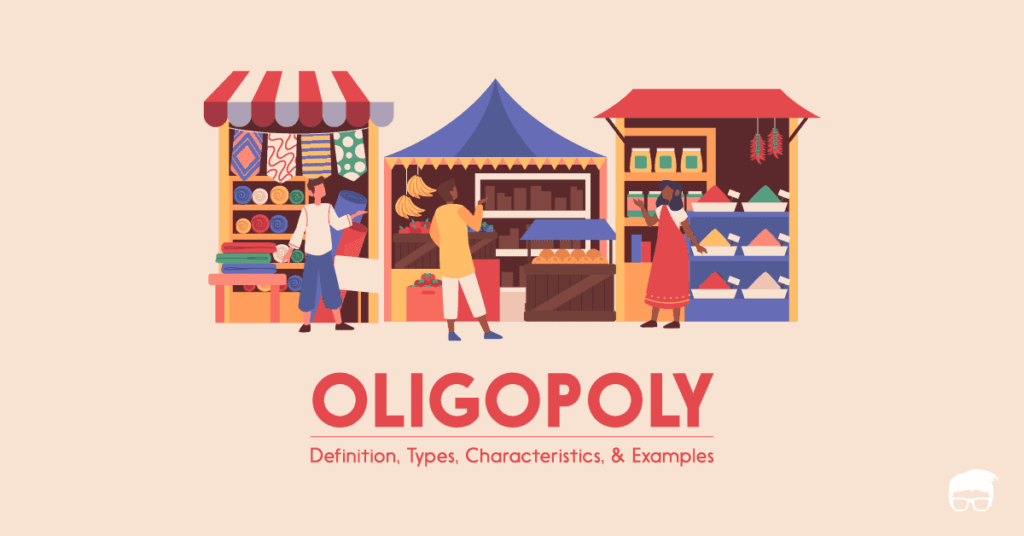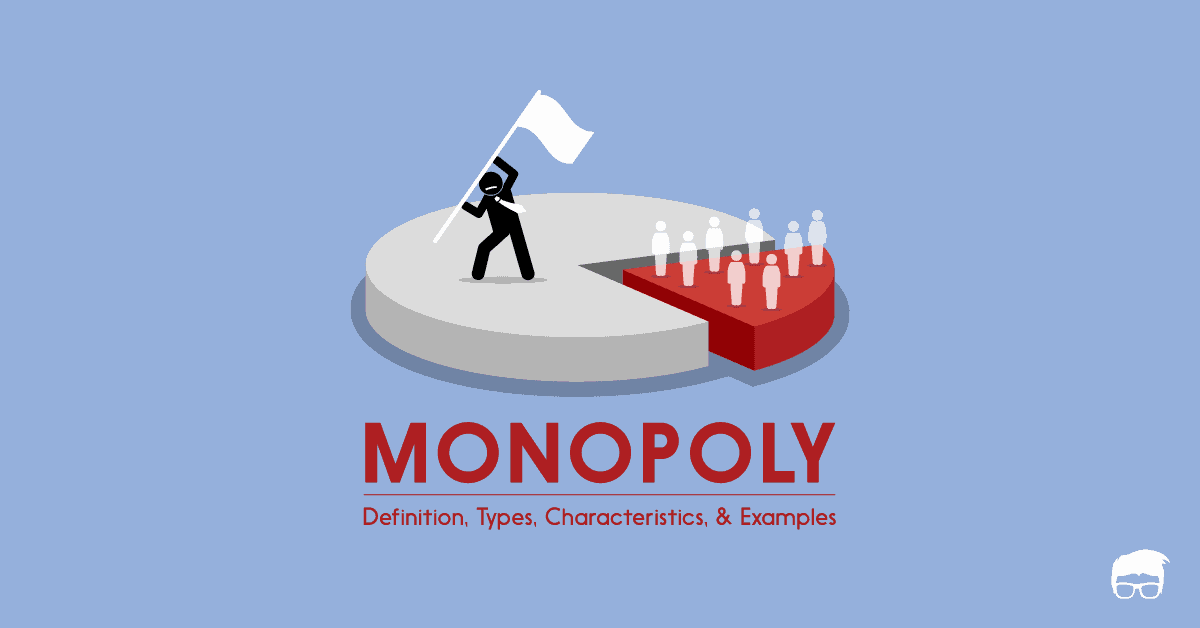As economies continue to develop, various industries witness a rise in competing forces. Due to this, it is often difficult to come across industries that house just monopolies (single seller) or duopolies (two sellers). However, one may easily come across a multitude of industries that house only a small number of dominant players or firms. Such market structures are called oligopolies.
But what exactly is an oligopoly?
Let’s find out!
What is An Oligopoly?
An oligopoly is a market structure wherein a small number of dominating firms make up an industry. These firms hold major chunks of the overall market share for a commodity.
The Greek word ‘oligos’ means “small, or little” and the prefix polein finds its roots in Greek, meaning “to sell”. Hence, the word oligopoly translates to small number of sellers.
To understand this concept better, let us break it down further –
- Market structure: A market structure is how a market is organised. It explains the competition in the market and how different players are connected to each other.
- Small number: Oligopolies exist in industries that only house only a small number of key players. This number could be anything more than two. While there is no upper limit to the number of firms that exist in an oligopoly, the number is essentially low enough that the move that one firm makes significantly affects all the other firms in an industry.
- Dominant firms: Dominant firms, or key players, are the firms that hold a significant market share in an industry.
Characteristics Of An Oligopoly
An oligopoly displays characteristics that are different from other market structures. These characteristics are as follows:
- Interdependence: The firms in an oligopoly are interdependent. This is because every firm’s strategies affect the market condition for that product. For example, if Netflix were to reduce its subscription fees, Amazon Prime Video would likely suffer a loss of consumers, and hence, Amazon too would consider changing its pricing strategy.
- Group behaviour: Preference is given to group behaviour in an oligopoly. In that way, the interest of all firms is protected.
- Advertising: Advertising is of great significance when it comes to an oligopoly. This is because advertising is an important competitive mechanism that firms have to employ in order to “stay in the game”.
- Competition: In an oligopoly, dominant firms constantly try to outdo their rivals in order to grab a higher market share.
- Barriers to entry: Barriers to entry prevent other firms from entering the industry. Oligopolies have high barriers to entry in order to gain or maintain a greater market share.
- Lack of uniformity: Firms in an oligopoly may not necessarily be of the same size. Therefore, we see an asymmetry in the sizes of firms.
- No price competition: Firms in an oligopoly practice rigid pricing. This is because lowering the price to win a greater market share would only lead to competing firms retaliating by charging even lower prices. This would lead to an unnecessary price war that would benefit none. Hence, no price competition is witnessed in an oligopoly.
- An indeterminate demand curve: One cannot predict what the demand curve of a firm would look like. This is because of the uncertain nature of an oligopolistic market structure, wherein the strategies of one firm affect the demand other firms experience.
Examples of Oligopolies
Below listed are a few examples of oligopolies:
- Music Streaming Applications (Global): Players like Spotify (30% of the total market share), Apple Music (25%), and Amazon Music (12%) dominate the industry.
- Video Streaming Services (USA): Players like Netflix (51% of the total market share), Hulu (31%), and Amazon Prime Videos (14%) dominate the video streaming industry.
- Airline industry (USA): Players like American Airlines, Inc., Delta Air Lines, Inc., Southwest Airlines, and United Airlines Holdings fly just under 70% of domestic passengers in the USA.
Types of Oligopolies
There exist four types of oligopolies in an economy. These are:
- Pure Oligopoly: If the firms in an oligopoly produce perfectly homogenous goods and services, it is referred to as pure oligopoly. While such oligopolies are seldom found – as firms in an oligopoly often engage in product differentiation – such oligopolies are prevalent in steel, copper and aluminium industries.
- Imperfect Oligopoly: If firms in an oligopoly produce differentiated products, it is known as an imperfect oligopoly. For example, the automobile industry, wherein firms engage in adding different features, innovations and designs to their car models which consequently make them stand out in the car market.
- Collusive Oligopoly: When the firms in an oligopoly cooperate with each other and then come to a common agreement with regards to the price and the output, it is known as a collusive oligopoly.
- Non-collusive Oligopoly: When the firms refuse to cooperate with other firms in the oligopoly and instead decide to compete with each other, it is referred to as a non-collusive oligopoly.
Duopoly: A special case:
A duopoly is a market structure wherein just two firms dominate an industry.
It is regarded to be a form of oligopoly.
Examples of duopolies:
- Soft drinks industry: dominated by The Coca-Cola Company and PepsiCo.
- Mobile operating systems: dominated by Android and Apple iOS.
Advantages of Oligopolies
In an economy, oligopolies have several advantages. Some of these are as follows:
- Price stability: As there is practically no price competition in an oligopoly, prices of commodities and services are stable.
- Lower prices: If a product is priced too high, consumers always have the option of approaching commodities produced by another firm in the industry. Hence, firms are compelled to balance creating profits with their aim of attracting new consumers. This leads to firms charging lower prices for their products.
- Innovation: Firms in an oligopoly invest in innovations as this attracts more consumers. Firms scramble to bring out new innovations to have an edge over their rivals. Consequently, these innovations allow them to capture a greater market share.
Disadvantages of Oligopolies
When viewed from the economy’s point of view, oligopolies have their disadvantages. Some of these disadvantages are listed below:
- Less Choices – As only a few firms dominate the industry, consumers have limited options. Potential entrants are kept out of the industry by the various barriers of industry, and hence, they are unable to offer their products in the market.
- Reduced competition – Cartel-like behaviour witnessed in collusive oligopolies significantly reduces competition.
- Barriers to entry could cause a potential loss to the overall economy – New entrants have the potential to bring out new innovations for the economy and gain considerable profits for the same. Due to barriers of entry, these potential entrants aren’t given the opportunity to do so. This causes a potential loss to economic welfare.
- Inefficient – It has been observed that oligopolies typically under-allocate resources. This makes oligopolies inefficient when it comes to allocation of resources and productivity as well.
Go On, Tell Us What You Think!
Did we miss something? Come on! Tell us what you think about our article in the comments section.
A startup enthusiast who enjoys reading about successful entrepreneurs and writing about topics that involve the study of different markets.









